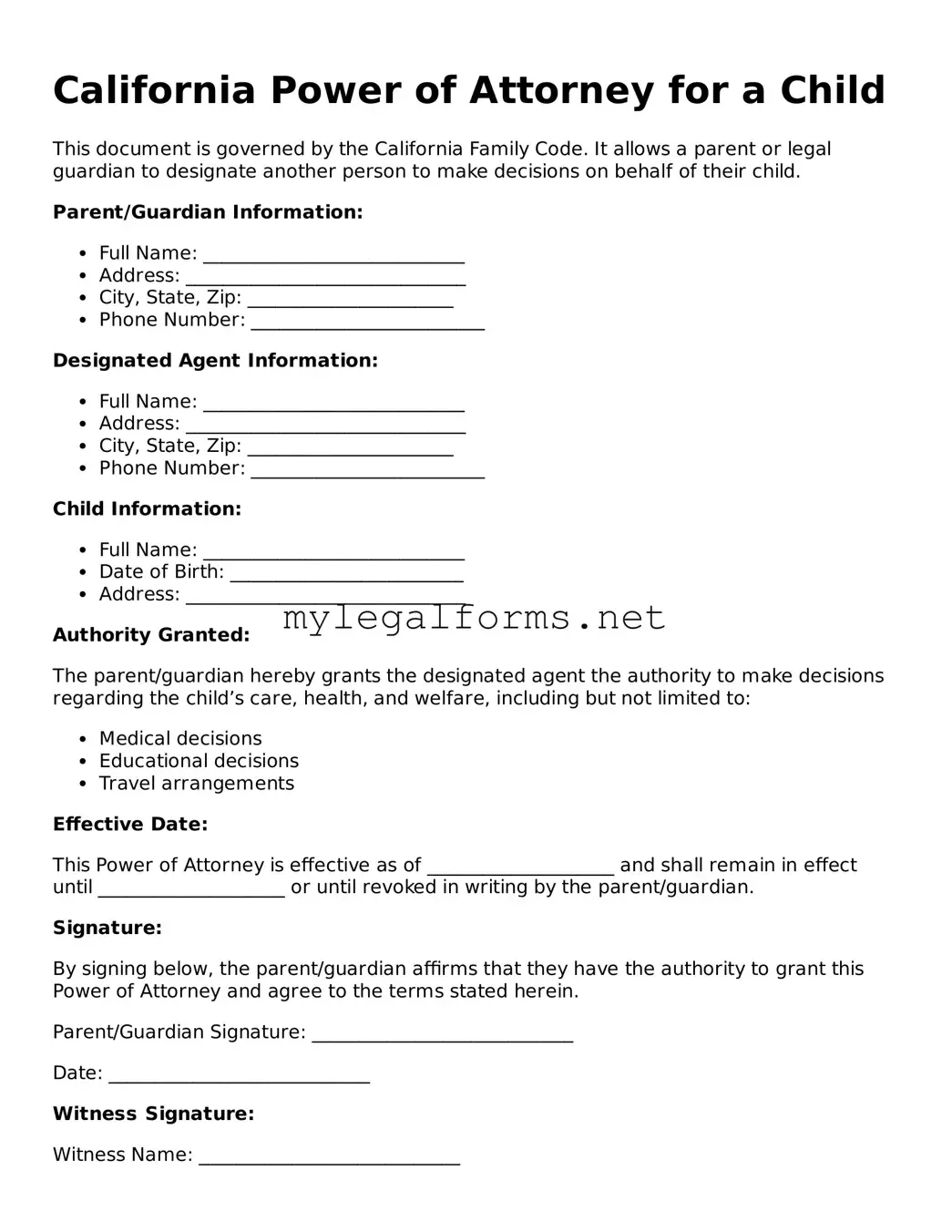Filling out the California Power of Attorney for a Child form can be a straightforward process, but many people inadvertently make mistakes that can lead to complications later on. One common mistake is failing to include all necessary information about the child. This includes the child’s full name, date of birth, and address. Omitting any of these details can result in the form being rejected or considered incomplete.
Another frequent error occurs when the person granting power of attorney does not sign the document in the appropriate section. The signature must be placed where indicated, and it should match the name printed on the form. Without a proper signature, the form lacks legal validity.
Many individuals also overlook the importance of having the form notarized. In California, notarization is often required to ensure that the document is recognized by authorities. Failing to have the form notarized can lead to challenges in enforcing the power of attorney when needed.
Additionally, some people neglect to specify the duration of the power of attorney. The form allows for a specific time frame or can be set to remain in effect until revoked. Not indicating this can create confusion about how long the arrangement is intended to last.
Another mistake involves not clearly defining the powers being granted. The form provides options for various responsibilities, such as medical decisions or educational matters. If the powers are not clearly outlined, it may lead to misunderstandings or disputes later on.
In some cases, individuals forget to include alternate agents. Designating a backup person to take over the responsibilities if the primary agent is unavailable is crucial. Without this provision, there may be delays in decision-making during critical times.
People often fail to discuss the arrangement with the child, especially if they are old enough to understand. Open communication can help ease any concerns the child may have about the situation and can foster a sense of security.
Another common oversight is not updating the form when circumstances change. Life events such as a move, a change in guardianship, or a shift in family dynamics can necessitate a new power of attorney. Keeping the document current is vital to ensure it reflects the present situation.
Some individuals may also misinterpret the legal implications of the power of attorney. It is essential to understand that this document grants significant authority to the agent. Misunderstanding these powers can lead to misuse or unintended consequences.
Finally, many people do not keep copies of the completed form. Retaining a copy is crucial for both the person granting power of attorney and the agent. This ensures that everyone involved has access to the same information and can refer back to the document when necessary.
